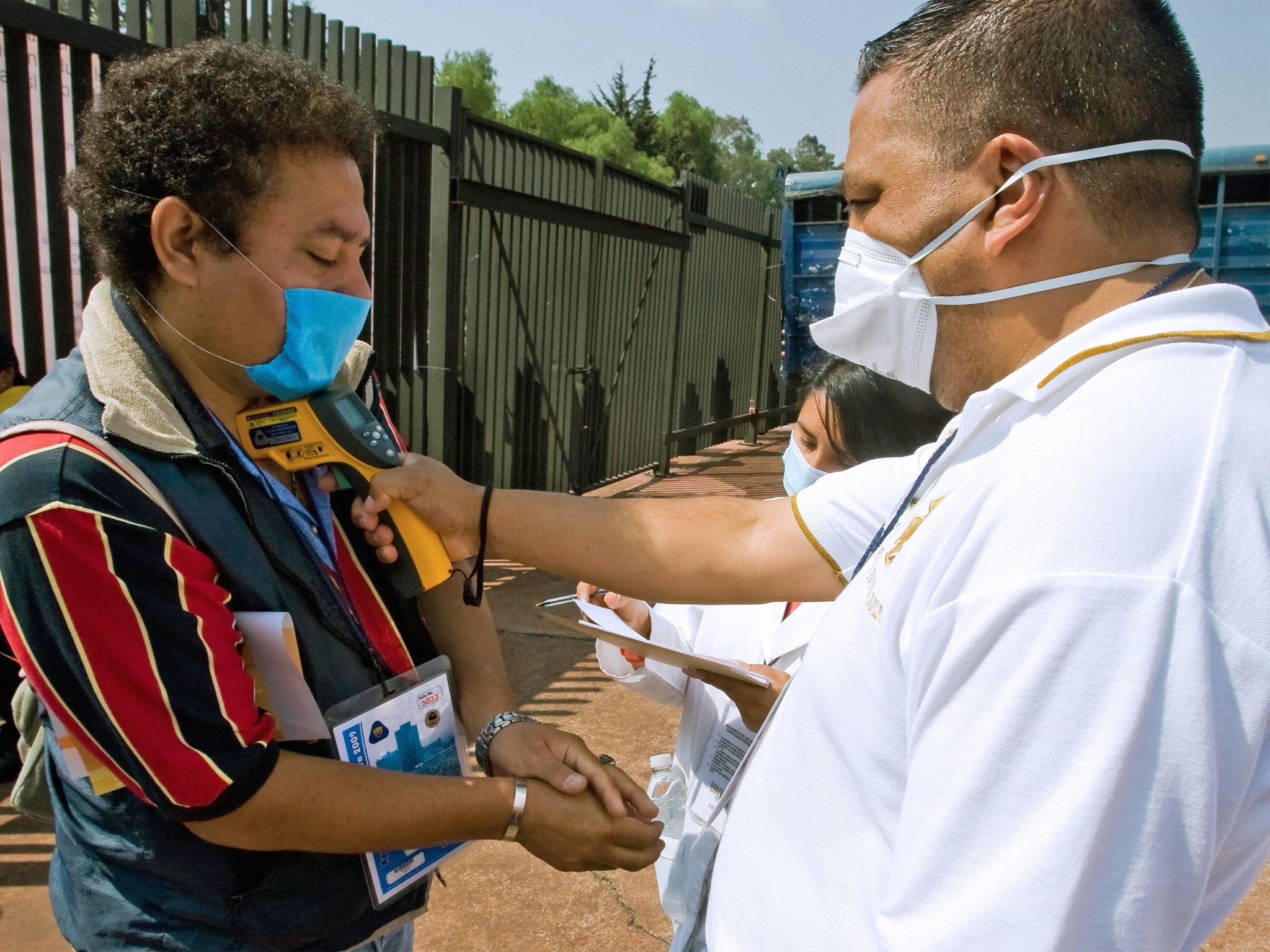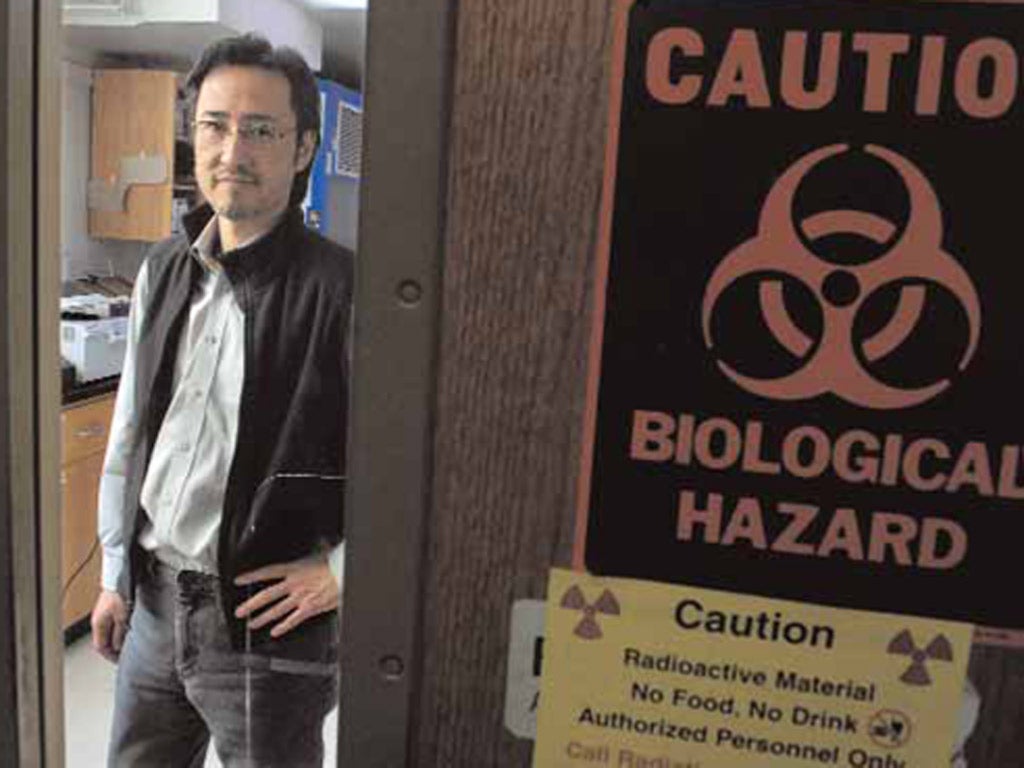Exclusive: Controversial US scientist creates deadly new flu strain for pandemic research
Scientists express horror over the creation of a virus that could render the human immune system defenceless

Your support helps us to tell the story
From reproductive rights to climate change to Big Tech, The Independent is on the ground when the story is developing. Whether it's investigating the financials of Elon Musk's pro-Trump PAC or producing our latest documentary, 'The A Word', which shines a light on the American women fighting for reproductive rights, we know how important it is to parse out the facts from the messaging.
At such a critical moment in US history, we need reporters on the ground. Your donation allows us to keep sending journalists to speak to both sides of the story.
The Independent is trusted by Americans across the entire political spectrum. And unlike many other quality news outlets, we choose not to lock Americans out of our reporting and analysis with paywalls. We believe quality journalism should be available to everyone, paid for by those who can afford it.
Your support makes all the difference.A controversial scientist who carried out provocative research on making influenza viruses more infectious has completed his most dangerous experiment to date by deliberately creating a pandemic strain of flu that can evade the human immune system.
Yoshihiro Kawaoka of the University of Wisconsin-Madison has genetically manipulated the 2009 strain of pandemic flu in order for it to “escape” the control of the immune system’s neutralising antibodies, effectively making the human population defenceless against its reemergence.
Most of the world today has developed some level of immunity to the 2009 pandemic flu virus, which means that it can now be treated as less dangerous “seasonal flu”. However, The Independent understands that Professor Kawaoka intentionally set out to see if it was possible to convert it to a pre-pandemic state in order to analyse the genetic changes involved.
The study is not published, however some scientists who are aware of it are horrified that Dr Kawaoka was allowed to deliberately remove the only defence against a strain of flu virus that has already demonstrated its ability to create a deadly pandemic that killed as many as 500,000 people in the first year of its emergence.
Professor Kawaoka has so far kept details of the research out of the public domain but admitted today that the work is complete and ready for submission to a scientific journal. The experiment was designed to monitor the changes to the 2009 H1N1 strain of virus that would enable it to escape immune protection in order to improve the design of vaccines, he said.
“Through selection of immune escape viruses in the laboratory under appropriate containment conditions, we were able to identify the key regions [that] would enable 2009 H1N1 viruses to escape immunity,” Professor Kawaoka said in an email.
“Viruses in clinical isolates have been identified that have these same changes in the [viral protein]. This shows that escape viruses emerge in nature and laboratory studies like ours have relevance to what occurs in nature,” he said.
Prior to his statement to The Independent, Professor Kawaoka’s only known public mention of the study was at a closed scientific meeting earlier this year. He declined to release any printed details of his talk or his lecture slides.

Some members of the audience, however, were shocked and astonished at his latest and most audacious work on flu viruses, which follow on from his attempts to re-create the 1918 flu virus and an earlier project to increase the transmissibility of a highly lethal strain of bird flu.
“He took the 2009 pandemic flu virus and selected out strains that were not neutralised by human antibodies. He repeated this several times until he got a real humdinger of a virus,” said one scientist who was present at Professor Kawaoka’s talk.
“He left no doubt in my mind that he had achieved it. He used a flu virus that is known to infect humans and then manipulated it in such a way that it would effectively leave the global population defenceless if it ever escaped from his laboratory,” he said.
“He’s basically got a known pandemic strain that is now resistant to vaccination. Everything he did before was dangerous but this is even madder. This is the virus,” he added.
The work was carried out at Wisconsin University’s $12m (£7.5m) Institute for Influenza Virus Research in Madison which was built specifically to house Professor Kawaoka’s laboratory, which has a level-3-agriculture category of biosafety: one below the top safety level for the most dangerous pathogens, such as Ebola virus.
However, this study was done at the lower level-2 biosafety. The university has said repeatedly that there is little or no risk of an accidental escape from the lab, although a similar US Government lab at the Centers for Disease Control and Prevention in Atlanta with a higher level-3 biosafety rating was recently criticised over the accidental exposure of at least 75 lab workers to possible anthrax infection.
Professor Kawaoka’s work had been cleared by Wisconsin’s Institutional Biosafety Committee, but some members of the committee were not informed about details of the antibody study on pandemic H1N1, which began in 2009, and have voiced concerns about the direction, oversight and safety of his overall research on flu viruses.
“I have met Professor Kawaoka in committee and have heard his research presentations and honestly it was not re-assuring,” said Professor Tom Jeffries, a dissenting member of the 17-person biosafety committee who said he was not made aware of Kawaoka’s work on pandemic H1N1, and has reservations about his other work on flu viruses.
“What was present in the research protocols was a very brief outline or abstract of what he was actually doing…there were elements to it that bothered me,” Professor Jeffries said.

“I’m a distinct minority on this committee in raising objections. I’m very uneasy when the work involves increasing transmissibility of what we know already to be very virulent strains,” he said.
Asked what he thought about the unpublished study involving the creation of a pandemic strain of flu deliberately designed to escape the control of the human immune system, Professor Jeffries said: “That would be a problem.”
Rebecca Moritz, who is responsible for overseeing Wisconsin’s work on “select agents” such as influenza virus, said that Professor Kawaoka’s work on 2009 H1N1 is looking at the changes to the virus that are needed for existing vaccines to become ineffective.
“With that being said, this work is not to create a new strain of influenza with pandemic potential, but [to] model the immune-pressure the virus is currently facing in our bodies to escape our defences,” Ms Moritz said.
“The work is designed to identify potential circulating strains to guide the process of selecting strains used for the next vaccine…The committee found the biosafety containment procedures to be appropriate for conducting this research. I have no concerns about the biosafety of these experiments,” she said.
Professor Kawaoka said that he has presented preliminary findings of his H1N1 study to the WHO, which were “well received”.
“We are confident our study will contribute to the field, particularly given the number of mutant viruses we generated and the sophisticated analysis applied,” he said.
“There are risks in all research. However, there are ways to mitigate the risks. As for all the research on influenza viruses in my laboratory, this work is performed by experienced researchers under appropriate containment and with full review and prior approval by the [biosafety committee],” he added.
Pandemic flu questions and answers
Why is this experiment different from what has been done before?
This is the first time that someone has taken a strain of influenza virus, called H1N1, known to have caused a global epidemic, in other words a “pandemic”, and deliberately mutated it many times over. It can then evade the neutralising antibodies of the human immune system, which have protected much of the human population since the virus first emerged in 2009.
What has been done previously in this laboratory?
Professor Yoshihiro Kawaoka of the University of Wisconsin-Madison attempted to increase the transmissibility of the H5N1 bird flu strain by genetic manipulation and repeated infection in laboratory ferrets, an animal model of human influenza. H5N1 is highly lethal when it infects people, but in the wild it is very difficult to transmit from one person to another and is usually caught by direct contact with infected poultry.
Professor Kawaoka’s most recent published research was on reconstructing the 1918 flu virus, the genetic structure which was known from samples retrieved from the frozen corpses of its victims buried in the Arctic, from wild strains of bird flu isolated from ducks. He managed to do this, but the study was widely criticised as “stupid” and “irresponsible”.
Why does he want to do this work?
The aim is to understand what is known as “gain of function”. What does it take, genetically, for a virus to become more infectious or more lethal? If we could understand this process then we would be in a better position to develop drugs, vaccines and other measures to protect ourselves from a sudden emergence of a new and deadly flu strain, or so Professor Kawaoka has argued.
Does he have the support of other scientists?
There is a big split within the scientific community over this kind of work. Some flu specialists support it, provided it is done under strictly regulated and controlled conditions. Others, mostly experts in infectious diseases outside the flu community, are passionately opposed to the work, claiming that the risks of an accidental (or even deliberate) release that will cause a devastating pandemic are too great to justify any practical benefits that may come out of the work.
Have there been any accidental releases from labs in the past?
Some experts cite the unexpected emergence of a new H1N1 strain of flu in 1977, which spread globally over three decades, as an early example of a flu virus being accidentally released from a lab. Genetic evidence points to it having escaped from a lab in China or the Soviet Union.
There are many examples of other infectious agents escaping from labs. Smallpox virus escaped from Birmingham Medical School in 1978 and killed a medical photographer, Janet Parker, the last person to die of smallpox. Foot and mouth virus escaped in 2007 from a veterinary lab in Surrey and in 2004 the SARS virus escaped from a high-containment lab in Beijing, infecting nine people before it was stopped.
Join our commenting forum
Join thought-provoking conversations, follow other Independent readers and see their replies
Comments